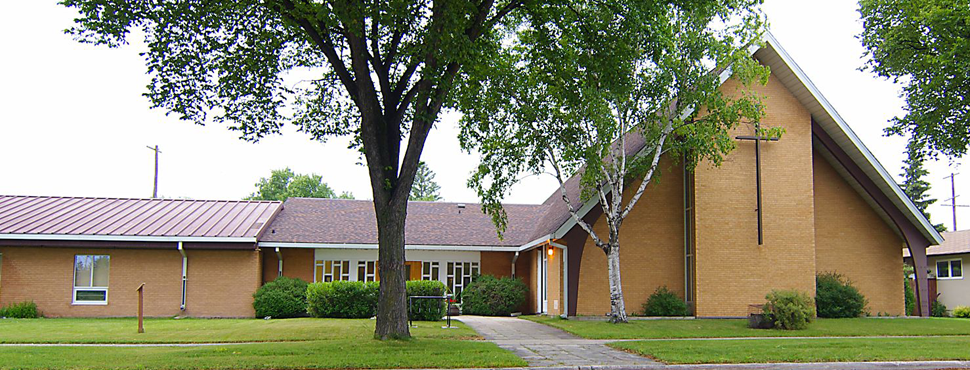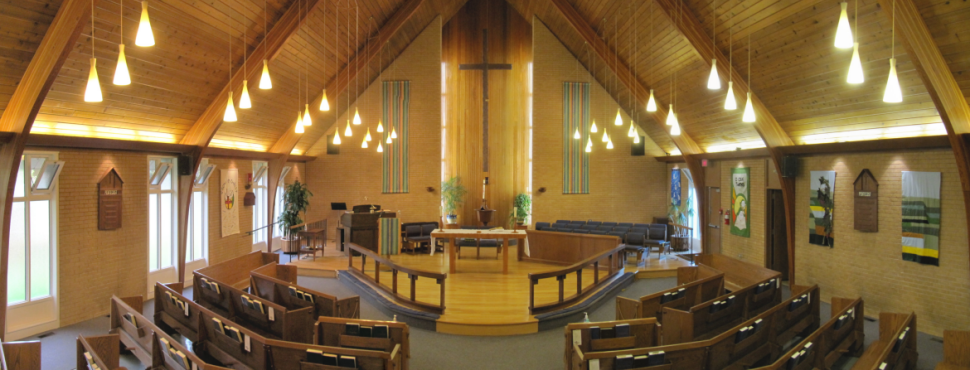August 15, 2021
The Feast of St. Mary the Virgin
Mary Holmen
Luke 1:46-55
Today is the Feast of St. Mary the Virgin. It is one of only a handful of feast days deemed significant enough to take precedence over the flow of regular Sunday observances. Historically, it is the day when the Church commemorates Mary’s death. Over the years, this feast has been given a number of titles. In the Orthodox tradition, it is the Feast of the Dormition of the Mother of God, and the old Book of Common Prayer gave it the lovely name of “The Falling Asleep of the Blessed Virgin Mary”. In the Roman Catholic tradition, it is the Feast of the Assumption, because of the doctrine that Mary was bodily assumed into heaven upon her death. If you travel in Europe, you will see many, many cathedrals dedicated to Mary, with portrayals in fresco, mosaic, painting, and sculpture of Mary being received by her Son and enthroned as Queen of Heaven.
Mary has had a special place in Christian faith and practice since the earliest days of the Church. She is honoured as the mother of Jesus Christ, the Son of God, and because the Gospels of Matthew and Luke attest that she was a virgin when she conceived and gave him birth. In fact, the other choice of gospel reading for today is Luke’s account of Jesus’s birth. There are other days in the Christian calendar that also focus on Mary: for instance, the Feast of the Annunciation, which celebrates Gabriel’s visit to Mary with the news that she would bear the promised Son of God; and the Feast of the Visitation, which commemorates Mary’s visit to Elizabeth when they were both pregnant with their unexpected children. Teachers of the faith, and Christians generally, took their lead from the opening chapters of Luke’s gospel, where Mary is portrayed as the first and model disciple. It did not take Luke’s readers very long to add to this picture. Mary was dubbed “the second Eve”, whose obedience undid the disobedience of the first Eve. Right from ancient times, Christians placed Mary at the centre of the mystery of salvation and someone who deserved to be venerated in her own right.
Over time, stories and legends grew up that developed and, it might be said, embellished the record of the scriptures. By the middle ages, popular piety based in these stories and legends led to the development of a full-fledged cycle of feasts focussed on various aspect of Mary’s life and a cult of devotion to her that at times threatened to eclipse the praise due to her Son. The Protestant reformers witnessed this and were aghast. Their pendulum swung to the opposite extreme and the calendar was purged of Marian observances. However, it was only about ten years later that Elizabeth I restored a couple of feasts as so-called “black letter days”, in other words minor observances. And, as pendulums do, the Anglican “middle way” settled on a more nuanced combination of major feasts and minor observances that is reflected in our present-day liturgical calendar.
Anglicans do not subscribe to the doctrine of Mary’s bodily Assumption into heaven, nor the doctrine of the Immaculate Conception, which holds that Mary was conceived without original sin, in order that Jesus might have the “immaculate” tabernacle of Mary’s womb in which to grow and come to birth. We do affirm the doctrine of the Virgin Birth, that Mary was a virgin at the conception and birth of her son. How, then, are we to view Mary? What place might she occupy in our liturgies, our discipleship, and perhaps in our personal devotions? Looking at the witness of the New Testament as a whole, I think we can look at Mary in two ways – and they are not mutually exclusive by any means.
The first is to see Mary as the archetype of the true disciple, the model of all those who hear and respond to God’s word. As today’s Collect says, her “Yes” made possible the Incarnation, the birth in human history of the eternal Son of God. Mary bears witness to the truth that God empowers human life for partnership with the divine life and purpose – or, to put it more plainly, that God works in the world through human decisions and actions. When we look deeper into the gospels, we can see that Mary’s discipleship may have ebbed and flowed, much like ours. She was “perplexed” at the news that God had chosen her to be the mother of Jesus. After his birth, she continued to be puzzled at further signs of his divine origin or hints of what he was destined to do. Patiently, she “treasured all these things and pondered them in her heart.” All three of the Synoptic Gospels (Matthew, Mark, and Luke) relate how Jesus’s mother and brothers come asking to speak to him, unable to get near him because of the crowds that surround him. At one point, it is even suggested they feared he was possessed, in other words insane, and they have come to take custody of him. Jesus states emphatically that his true family consists of those who hear the word of God and do it. You might detect hints of conflict, or at least misunderstanding, between Jesus and his birth family. Yet, the gospel of John records Mary’s presence at Jesus’s first sign at the wedding in Cana, instructing the servants to do whatever Jesus tells them. Clearly, she has complete trust in his ability to manage the situation. All four gospels state that Mary was present at her son’s death and burial, and the book of Acts incudes both Mary and the brothers of Jesus among those gathered in the upper room at the very beginnings of the Christian movement, waiting and praying for the coming of the Holy Spirit. Mary’s growth in discipleship is a model for all of us. Saying that initial yes did not remove all doubts and questions, but she remained open to the movement of God’s call within her. It is as much for that as for her willing hospitality that we may honour her.
A second way of looking at Mary is to go to the words of today’s Gospel reading. Mary’s song is a song of power. It is a proclamation of the God who shows strength of arm, who scatters the proud, who casts down the mighty, who sends the rich away from the table of plenty. It would be easy to read this song as an exaltation of power itself, but it is not. It is a celebration, not of God as the pinnacle of top-down authority but the God who levels, the God who overthrows all human notions of power to look with favour on the lowly, to elevate the humble, to fill the hungry. The Song of Mary lays out the parameters of the reign of God that breaks into human history in the person of Jesus of Nazareth, the child of a Galilean peasant girl, born in the most humble of circumstances and executed in the most hideous way possible. It is a song of political faith in the new world God is bringing into being. It is counter-cultural, not to say revolutionary.
The Song of Mary also calls us to choose sides. Are we really on the side of mercy? Do we really identify with the lowly, as both Mary and Jesus did? It is so tempting to put our faith in sheer power, to believe we will be more secure if we chose the “might makes right” path. It is risky to follow the God who makes God’s self completely vulnerable. This holy and mighty God shows strength chiefly in caring for the needy and downtrodden. As disciples of this God, we are called to do the same.
So, we honour Mary today for her witness as the first disciple. We honour her for her obedience, her hospitality, her faithfulness, and her proclamation. And we pray that we may follow her example and, like her, grow into maturity as members of the family of God and instruments of God’s ongoing work in the world. Amen.


